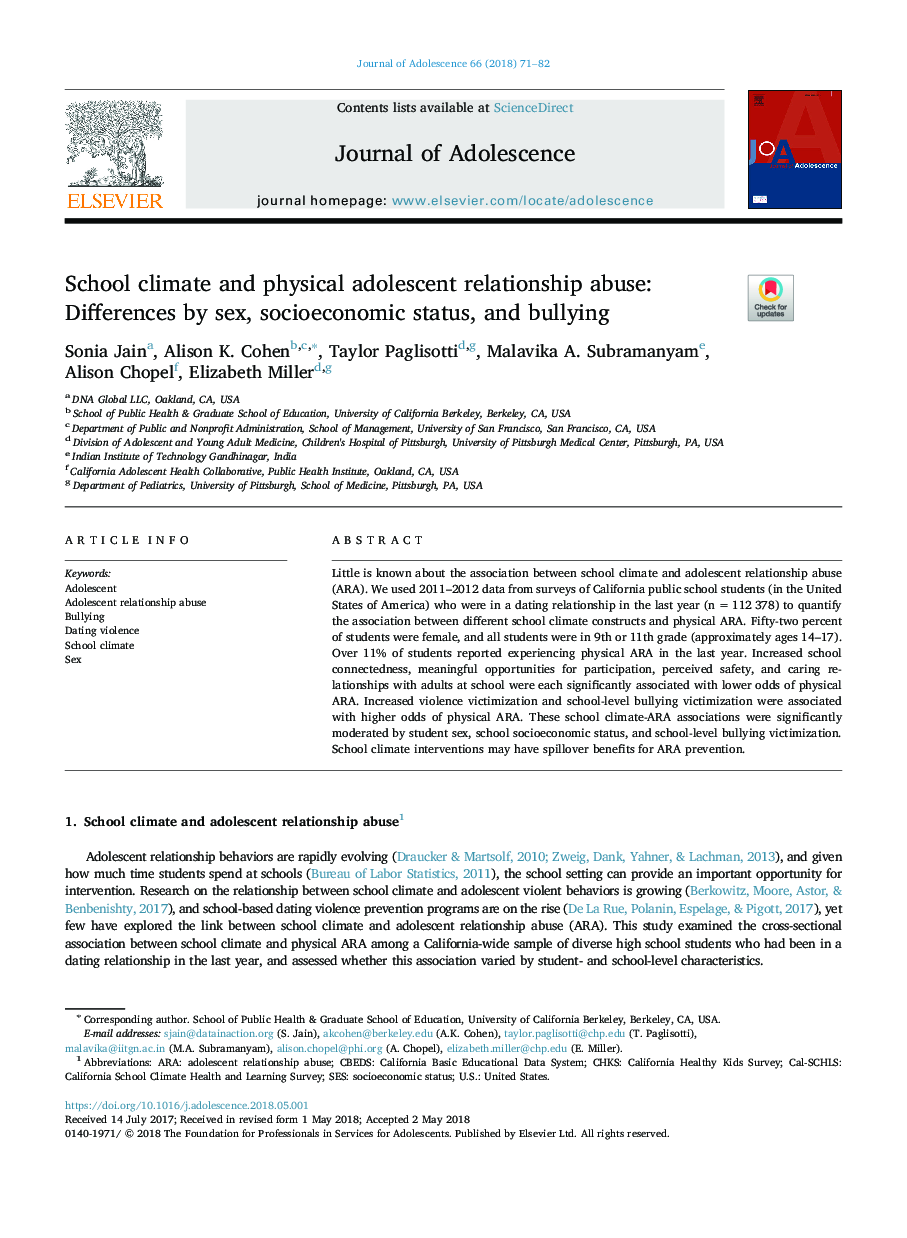| Article ID | Journal | Published Year | Pages | File Type |
|---|---|---|---|---|
| 7240793 | Journal of Adolescence | 2018 | 12 Pages |
Abstract
Little is known about the association between school climate and adolescent relationship abuse (ARA). We used 2011-2012 data from surveys of California public school students (in the United States of America) who were in a dating relationship in the last year (nâ¯=â¯112â¯378) to quantify the association between different school climate constructs and physical ARA. Fifty-two percent of students were female, and all students were in 9th or 11th grade (approximately ages 14-17). Over 11% of students reported experiencing physical ARA in the last year. Increased school connectedness, meaningful opportunities for participation, perceived safety, and caring relationships with adults at school were each significantly associated with lower odds of physical ARA. Increased violence victimization and school-level bullying victimization were associated with higher odds of physical ARA. These school climate-ARA associations were significantly moderated by student sex, school socioeconomic status, and school-level bullying victimization. School climate interventions may have spillover benefits for ARA prevention.
Related Topics
Health Sciences
Medicine and Dentistry
Public Health and Health Policy
Authors
Sonia Jain, Alison K. Cohen, Taylor Paglisotti, Malavika A. Subramanyam, Alison Chopel, Elizabeth Miller,
